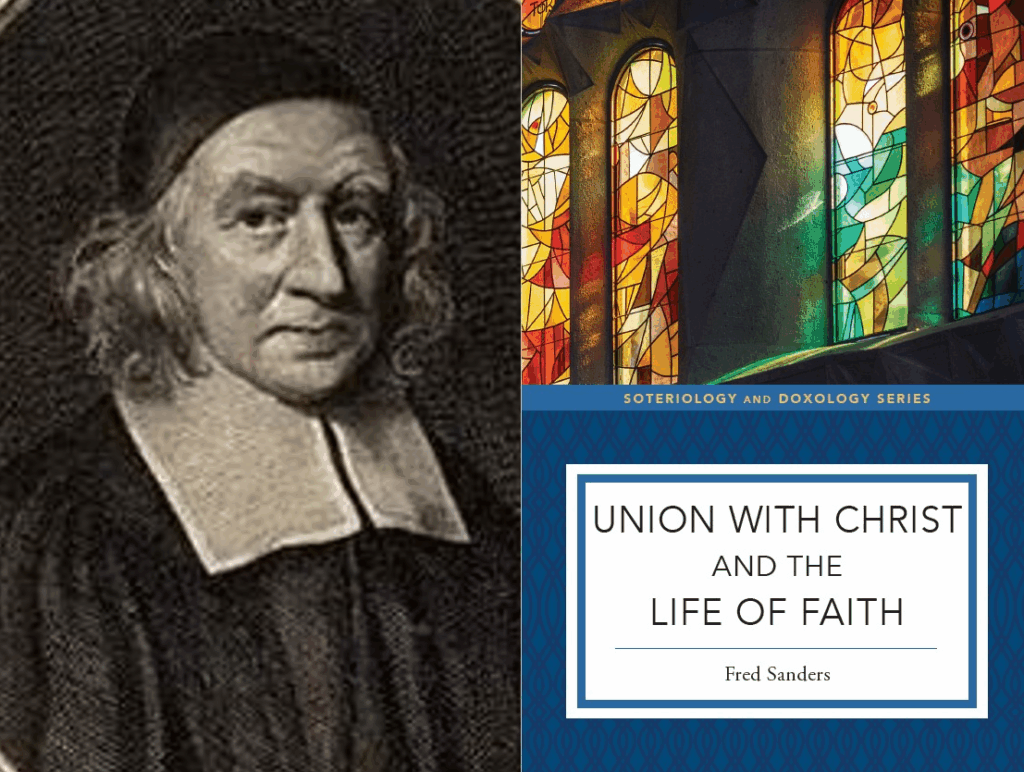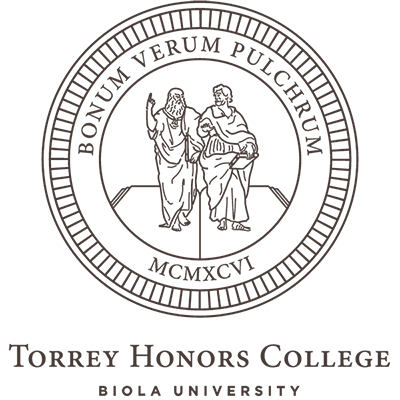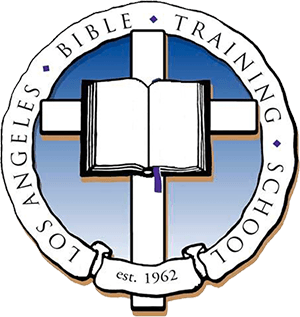A scene from The Canterbury Psalter (12th century)
Blog
A New Frame from the Fullness of Christ

This is an excerpt from my 2025 book Union with Christ and the Life of Faith, in which I hand over the microphone to Walter Marshall for a few pages. In the pages leading up to this section, I argued for the tightest possible connection between the way believers are saved and the way they should go on to live. As you can see from the two parts of my book’s title (Union + Life), this connection really brings us to the heart of its message. So having established the point in my own arguments, I go on to call a few classic witnesses to the same truth, and one of my favorites is Walter Marshall’s The Gospel Mystery of Sanctification. Get ahold of this classic and read it! And in the meantime, enjoy this excerpt from my own book, an excerpt which boils down Marshall’s key idea into a few pages.
For a theology of the Christian life that is consistently and self-consciously grounded in union with Christ, we can do no better than to turn to the Puritan pastoral theologian Walter Marshall (1628–80). Marshall’s only published book bears the title The Gospel Mystery of Sanctification, and though it has a great reputation (frequently praised in superlatives by those who know it), it still has not had as widespread an influence as it deserves. Marshall’s writing style is both intense and prolix. He deeply loves his subject matter and spends three hundred pages devoutly expounding and applying a set of ideas that he has already established in outline in a dozen key pages. His idea of clear organization rarely matches the needs of the reader. But the spiritual insight at the heart of his classic book deserves close attention because it sets out the doctrine of union with Christ as the foundation of the entire Christian life.
Marshall uses the old word “sanctification” in a very broad sense, as an umbrella term that covers the life and experience of Christians. Of course it signifies holiness, and the holiness of Christians in particular (rather than the divine attribute proper). But Marshall especially emphasizes two aspects of sanctification. First, he focuses on the entire field of Christian life subsequent to conversion. That is, he is not thinking of conversion, the entrance into the Christian life, or a single experiential moment thereafter. Sanctification denotes a process, not a crisis; it is not a birth into life, but a lifetime. Second, he uses the term “sanctification” to indicate real changes experienced in that lifetime. That is, sanctification is not about a forensic reality, something considered as reckoned to a believer; it is not just a description of a new relation but an account of the actual difference that new relation makes in the ongoing life of the believer. If we bear in mind this usage (sanctification is a process of real change after conversion), then it is clear that we are talking, in somewhat old- fashioned terms, about the Christian life as it is actually lived out. And it is within that framework that Marshall brings out the centrality of union with Christ.
Although we are mostly calling on Marshall as the classic witness to the close fit between union with Christ and sanctification, we cannot understand his project without at least briefly noting his orientation toward the law. Marshall’s Gospel Mystery presupposes a positive and constructive relation to the law of God, which he looks to as the standard of holiness within the Christian life. Unlike some other Christian schools of thought, Marshall’s version of Reformed piety does not consider the law’s main work to be driving us to the gospel. Instead, the law is an expression toward humanity of God’s own holy character, and it only enters into its true and full work when it begins to bring about an actual change in the life of the believer. John Webster once declared that only by giving “a sketch of the individual Christian’s sanctification” can a theology of holiness “trace to its end the trajectory of the work of the triune God.” Walter Marshall would put this more in terms of the law, but that is because he so closely identifies law and holiness. To trace the trajectory of the Trinity’s transformative holiness to its end, Marshall might say, we must understand how the Father, Son, and Holy Spirit bring about the gospel mystery of obedient creatures.
What would it take for a creature to be obedient? This way of putting the question is distinctive; it is not the way everyone would approach sanctification. But once Marshall has guided his readers to see that it is the right question, he gives his answer: “The way to get holy endowments and qualifications necessary to frame and enable us for the immediate practice of the law, is to receive them out of the fulness of Christ, by fellowship with Him; and, that we may have this fellowship, we must be in Christ, and have Christ Himself in us, by a mystical union with Him.” The goal is to be empowered to live in holiness— that is, to acquire “qualifications necessary to . . .enable us for the immediate practice of the law.” The way to that goal is mystical union with Christ.
It is easy to imagine two objections to this formula. Legalists might object that the way to do the law is simply to do the law, not to change the subject to mystical union. That objection leads directly to Pelagianism, however. By contrast, all that Marshall is saying is that sanctification depends on a prior reality of salvation— he prefers to focus on union with Christ as the prerequisite, where a more conventional Protestant move might be to focus on justification as the prerequisite. On the other side, antinomians might object that Marshall’s formulation demotes union with Christ, making it a means to a higher end, and thus treats the law as something greater than union with Christ. But Marshall is not saying that union with Christ exists solely for the purpose of bringing about righteous conduct; he is only saying that when we ask how to behave righteously, we will necessarily have to take the route of union with Christ. For that matter, mystical union might well be an end in itself. But then again, if a claim to union with Christ were to produce something besides obedience to the law, there would be reason to suspect it as illusory. Marshall hopes to redirect both kinds of objectors by showing them not only that holy living is the appropriate outcome of union with Christ, but that union with Christ is provided as the way to reach the goal of holy living. This is the mystery in the book’s title, The Gospel Mystery of Sanctification.
A key word for Marshall is “frame,” which he uses in the sense of the way a soul is composed or comported toward things. A frame is a disposition or habitual attitude, more or less settled. Marshall uses the word to indicate the mental, emotional, and spiritual state of readiness a believer must be in to behave properly. His eye is always on conduct and practical behavior, but he does not ignore the condition of the mind and heart, the character from which these outward actions arise. Behind and beneath our conduct is a “holy frame and disposition, by which our souls are furnished and enabled for immediate practice of the law.” This frame is not something we compose for ourselves. Rather, it “must be obtained by receiving it out of Christ’s fulness, as a thing already prepared and brought to an existence for us in Christ and treasured up in Him; and that as we are justified by a righteousness wrought out in Christ and imputed to us, so we are sanctified by such a holy frame and qualifications as are first wrought out and completed in Christ for us, and then imparted to us.” Marshall is using a schema here that we can recognize from Zanchi: our holiness is treasured up in Christ, where it was first created in him for us. The holiness we need was completed in him to be imparted to us. Marshall extends Zanchi’s deposited- dispensed schema even more deeply into Christian experience.
The new life of believers runs in parallel to the old: “As our natural corruption was produced originally in the first Adam, and propagated from him to us, so our new nature and holiness is first produced in Christ, and derived from Him to us, or, as it were, propagated.” Marshall’s emphasis is on the fact that the “holy frame” we require is itself a thing established outside of us, for our later appropriation. “We are not at all to work together with Christ, in making or producing that holy frame in us, but only to take it to ourselves, and use it in our holy practice, as made ready to our hands.” Union with Christ includes the reception of “that holy frame of spirit that was originally in Him.” Marshall takes for granted that his readers clearly understand justification by grace through faith and that they are accustomed to reckoning that the work of Christ is imputed to them for forgiveness of sins. His goal is to draw out the deeper reality supporting this imputation and to bring it into Christian experience.
We commonly think that we must get a holy frame, by producing it anew in ourselves, and by forming and working it out of our own hearts. Therefore many that are seriously devout, take a great deal of pains to mortify their corrupt nature, and beget a holy frame of heart in themselves, by striving earnestly to master their sinful lusts, and by pressing vehemently upon their hearts many motives to godliness, laboring importunately to squeeze good qualifications out of them as oil out of a flint. They account, that though they be justified by a righteousness wrought out by Christ, yet they must be sanctified by a holiness, wrought out by themselves. And though, out of humility, they are willing to call it infused grace, yet they think they must get the infusion of it by the same manner of working, as if it were wholly acquired by their own endeavors.
A large part of Marshall’s project is to ensure that justification by faith does not pivot to sanctification by works but rather bears fruit as sanctification by faith. And his confidence that this can happen comes from his steady vision of union with Christ as the comprehensive, underlying reality. This underlying reality is why we “receive a new nature out of the fulness of Christ.”
Marshall focuses attention on the “gospel mystery” and explains that its mysterious character is its mystic character— that is, the mystical union by which believers are spiritually joined to Christ himself. “I may well call this a mystical union, because the Apostle calls it a great mystery, in an epistle full of mysteries (Eph. 5:22), intimating, that it is eminently great above many other mysteries.” Readers should not be surprised by Marshall’s next move: he says union with Christ
is one of the three mystical unions that are the chief mysteries in religion. The other two are, the union of the Trinity of Persons in one Godhead, and the union of the divine and human natures in one Person, Jesus Christ, God and man. Though we cannot frame an exact idea of the manner of any of these three unions in our imaginations, because the depth of these mysteries is beyond our comprehension, yet we have cause to believe them all, because they are clearly revealed in Scripture, and are a necessary foundation for other points of Christian doctrine.
The now familiar cascading mystery structure of the three unions is once again invoked here as the comprehensive reality of salvation. Together these three unions constitute the center of Christian theology, the basis on which other doctrines are constructed and comprehended.
To anchor his point even more securely, Marshall takes up the biblical story of the life of Jesus, indicating how the major moments in that life were devoted to preparing the “new holy frame” of obedience. That is, in order to speak more clearly about how sanctification is dispensed or distributed to believers, he first expounds how it was deposited, or stored up in, the life of Christ: “The end of Christ’s incarnation, death, and resurrection, was to prepare and form a holy nature and frame for us in Himself, to be communicated to us by union and fellowship with Him; and not to enable us to produce in ourselves the first original of such a holy nature, by our own endeavors.” That frame was instituted in Christ and developed over the course of his earthly life. We see it at the level of the incarnation itself:
By his incarnation, there was a man created in a new holy frame, after the holiness of the first Adam’s frame that had been marred and abolished by the first transgression; and this new frame was far more excellent than ever the first Adam’s was; because man was really joined to God by a close, inseparable union of the divine and human nature in one person, Christ.
We see it further in his death, by which “He freed Himself from the guilt of our sins, imputed to Him, and from all that innocent weakness of His human nature, which He had borne for a time for our sakes.” By dealing with our sins by his own death, Christ “prepared a freedom for us, from our whole natural condition; which is both weak as His was, and also polluted with our guilt and sinful corruption.” Finally, we see it in his resurrection, by which “He took possession of spiritual life for us, as now fully procured for us, and made to be our right and property by the merit of His death,” which is why believers are described in Ephesians 2:5 as “made alive together with Christ” and raised up to sit in heavenly places in him. “His resurrection was our resurrection to the life of holiness, as Adam’s fall was our fall into spiritual death.”
After a brief theological survey of the way Christ worked out this new holy frame of obedience on our behalf, Marshall turns to the work of the Holy Spirit in dispensing it to us. But his pivot to that theological point is to argue that even the power of the Holy Spirit was first and foremost worked out on our behalf in the life of Jesus: “The Holy Ghost first rested on Christ in all fulness, that He might be communicated from Him to us,” with the consequence that “according to the scriptural phrase, it is all one, to have Christ himself, and to have the Spirit of Christ, in us (Rom. 8:9, 10). . . . He giveth us an experimental knowledge of those spiritual blessings which he himself prepared for us by the incarnation, death, and resurrection of Christ.” Marshall’s Christ- centered account of sanctification by faith does not exclude or distract from the work of the Spirit; in fact it drives toward a pneumatological consummation with considerable force.
–from Fred Sanders, Union with Christ and the Life of Faith (Baker Academic, 2025), 128-135.
About This Blog

Fred Sanders is a theologian who tried to specialize in the doctrine of the Trinity, but found that everything in Christian life and thought is connected to the triune God.


